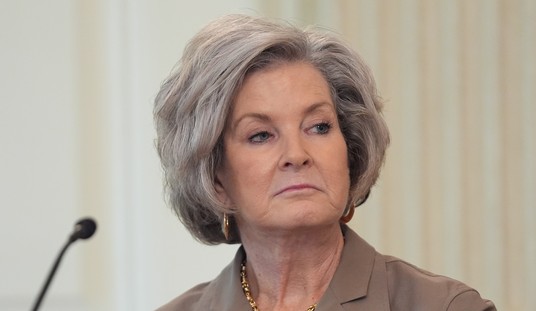There is perhaps nothing as destructive to the free market as the federal government’s stranglehold over the agriculture sector. There is also nothing as detrimental to the GOP’s ability to draw a bold contrast on free markets, dependency, spending, and crony capitalism, as their willingness to support 5-year farm bills.
Current farm policy creates inveterate dependency in some of the most conservative corners of the country, upending our contrast to the dependency policies of blue state America. Worse, it creates a perverse reality in which we can no longer elect pure free-market conservatives in some of our most conservative districts, due to the adversity from local special interests that are emboldened by rural welfare. We must chart a course to jettison government’s involvement in agriculture from the fabric of our economy. A good place to start is the current 5-year farm bill, which expires later this year.
Last month, the Senate Agriculture Committee passed a 5-year farm bill (S 3240) with full bipartisan support. Even the senators that opposed the bill only did so because the southern crops would not receive enough insurance subsidies under this proposal. The alarm bells in your mind should already begin ringing. In order to make the bill palatable to the public, members of the committee – working in tandem with the Big Ag lobby – employed a rope-a-dope policy on farm subsidies in order to expand government’s tendentious and distorting role in farming. They agreed to terminate the $5 billion annual direct subsidy program created in 1996 in exchange for an expansion of the crop insurance program – one that might ultimately leave taxpayers on the hook for even more money.
The federal government has been supporting and intervening in agriculture since the New Deal programs of the 1930s. The government has pumped billions into direct subsidies, crop insurance, conservation subsidies, marketing loans, disaster aid, trade barriers, commodity price supports, and production controls. The total cost tops $220 billion over 10 years. The distorting effect on the market has been nothing short of disastrous.

Since the ‘30s, the federal government has been paying for half the cost of farmers’ crop insurance premiums at a current price-tag of $90 billion over 10 years. This, like all government interventions, has distorted the price of commodities and encouraged riskier investments not substantiated by the private market. But even these subsidies would only cover 75-85% of the losses brought on by unforeseen adverse farming conditions. Now, in lieu of direct subsidies, Republicans and Democrats want to create a “shallow loss” program that will protect farmers from almost any loss of revenue. The new program will compensate farmers for any decrease in revenue more than 5-10% below that of recent years. Wouldn’t we all like the government to guarantee us 90-95% of our average revenue from year to year? Imagine what sort of behavior this will encourage and what sort of distorting effect this will have on food prices! Farmers will no longer have to buy the farm; taxpayers will do it for them.
According to American Enterprise Institute economists Vincent Smith and Barry Goodwin, the new programs could cost taxpayers anywhere from $5 billion to $7.5 billion per year. But who would benefit most from these subsidies? Rich farmers – the ones who liberals supposedly revile. It’s no surprise that the Ag lobby, which is one of the most powerful special interests in the country, is pushing hard for this bill. This massive “safety net” redistributes wealth to rich farmers by guaranteeing million dollar investments and profits.
A farmer from North Dakota explained to me the market distortion and redistributive effects like this:
For one thing, the fed government has effectively guaranteed nearly all bankers loans to crop farmers. This has greatly enhanced the borrowing capacity of farmers and has enabled the bidding of land rent and purchase prices higher. The result is that margins of profitability have been bid to very small levels. Narrow margins of profitability basically destroy the ability of smaller farmers to stay in business. For larger farmers the multimillion dollar investment guarantees and the occasional profit guarantees have been extremely attractive.
The inequality of these policies is appalling! On one hand some large farmers have multimillion dollar policies that not only guarantee their multimillion dollar investment but routinely also guarantee these farmers a profit. The smaller farmer has a $20,000 or $50,000 policy that is really insignificant in value in comparison to the financial security insurance blanket obtained by the larger farmer. The effect is that the federal government is turbo charging the ability of the larger farmer to compete for land resources with the gift the taxpayer gives the already most competitive individuals. No insurance entity would offer these policies without the billions in subsidies the feds has thrown out to the insurance companies offering these policies.
One can only imagine the market bias that the new shallow loss program will create on behalf of rich farmers. There is simply no way that any supporter of free enterprise can vote for the current farm bill. It must be filibustered by all Republicans when it comes to the Senate floor later this week and it must be dead-on-arrival in the House.
The shallow loss program is just one glaring vice in the farm bill. This monstrosity also contains ethanol handouts and green social engineering programs. Additionally, the bill does nothing to reform the out-of-control food welfare programs, which account for about 75% of the cost ($770 billion extrapolated out for 10 years) of the 5-year farm bill. We must kill this leviathan in the inchoate stages; lest it go the way of the other bipartisan endeavors in recent months.
We have the opportunity to draw a bold contrast by standing against crony capitalism, a centrally-planned economy, and higher food prices. Now is the time to wean dependency, and it must start in our conservative states. If we continue to elect subsidy-supporting statists from red states, we will be consigned to a permanent majority governing coalition of the dependency class.
Cross-posted from The Madison Project












Join the conversation as a VIP Member